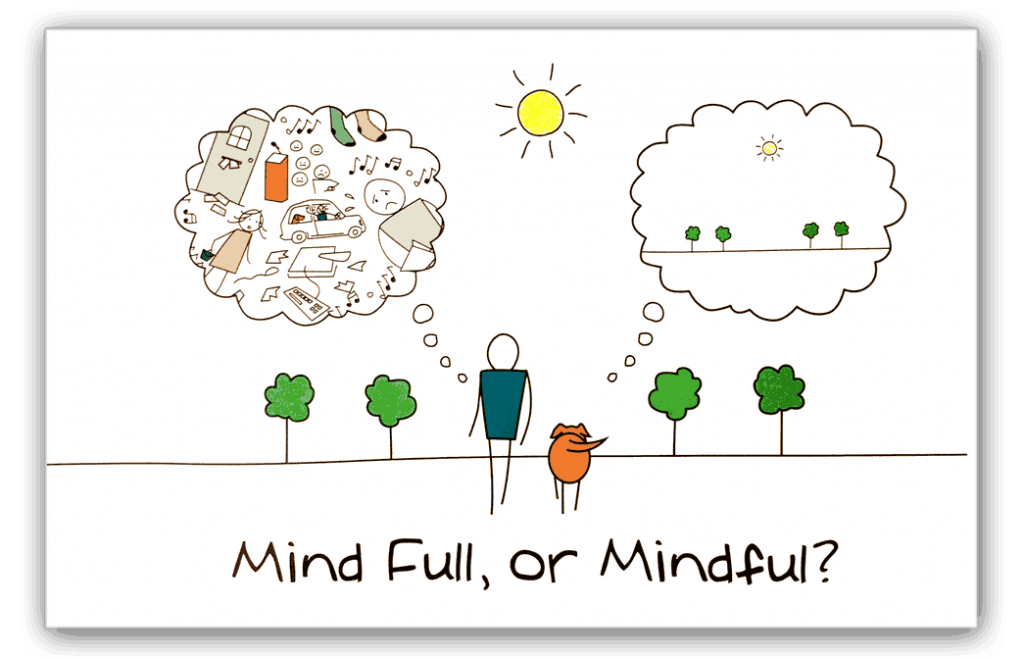|
Welcome to my new blog series Meditation is not what you think. When I meet new people and mention that I serve folks challenged by homelessness, I'm usually met with a lot of enthusiasm. Most respond with something like, "Wow, that's amazing! How can I get involved?" But when I mention that I'm also a yoga and mindfulness meditation teacher, the reaction is quite different. I usually hear comments like, "I can't meditate. I can't make my mind go blank." or "I can't do yoga. I can't even touch my toes." Meditation and yoga often have these common misconceptions surrounding them. And as someone who has personally experienced the profound benefits of these practices and witnessed how they've transformed the lives of my students, I’d really like to change that! So in the months ahead, I'll be sharing insights into what meditation (and yoga) is and what it isn’t. I’m going to start with the lowest hanging fruit: Meditation is not making your mind "go blank". The notion that mindfulness meditation is about stopping all thoughts or making your mind go blank could not be farther from the truth. And graphics like this one are cute but not entirely accurate: Meditation is not about stopping all of your thoughts, making your mind “blank” or emptying it of all activity because THAT IS IMPOSSIBLE. Our minds are thinking machines. They allow us to create, get stuff done, and keep ourselves safe. Just because we decide to sit down to meditate doesn’t mean all of this thinking will magically stop. Instead of trying to stop thinking/make our minds go blank, we give ours minds what’s called an “anchor” - something to focus on to settle ourselves and our attention. This anchor is oftentimes the sensations of breathing but since that doesn’t work for everyone, your anchor could be sensations in the body or even sound. Whatever you are noticing about the anchor, moment to moment, is one part of the practice. The other part is that as we aim our attention on our chosen anchor, our mind will get to thinking again. It will get distracted and whisked away from your anchor. This could start in a nanosecond or in several seconds but you can be guaranteed that it will happen and it does not mean that you are a failure or that you “can’t meditate”. Paradoxically, the transformative aspects of a meditation practice come simply from (1) noticing these distractions. Over and over again. And (2) meeting yourself and your busy mind with kindness - without beating yourself up about it - as you return your attention to your chosen anchor. So the distractions AND the returning and settling back into the present moment ARE the practice. Both of them. Revisiting the graphic above, a more accurate depiction would be this one, with a small addition of the arrows <-> in the middle: We toggle back and forth between a mind that's busy thinking, and one that is settled and simply aware of what's happening from moment to moment. It's this back and forth that truly is the practice. It's what mindfulness meditation is all about.
Have questions or want to learn more? Join me in exploring mindfulness in my Let's Sit mid-day mindfulness drop in class or Commit to Sit month long exploration of the practice. And feel free to reach out to set up a one on one session. P.S. I'd like to give a nod to one of my teachers, Jon Kabat-Zinn, an American professor emeritus of medicine and the creator of the 'Stress Reduction Clinic' and the 'Center for Mindfulness in Medicine, Health Care, and Society' at the University of Massachusetts. His book Meditation Is Not What You Think: Mindfulness and Why It's So Important has inspired this series and greatly influenced my practice and teaching.
2 Comments
Rob Rolling
9/14/2023 10:15:24 am
Thank you. The like button didn't work.
Reply
Cheri
9/14/2023 10:32:46 am
Thanks for letting me know, Rob! I couldn't figure out how to fix that so I removed the button for now [insert "oh well" emoji] :)
Reply
Leave a Reply. |
Cherimindfulness educator yoga practitioner philanthropic activist |


 RSS Feed
RSS Feed